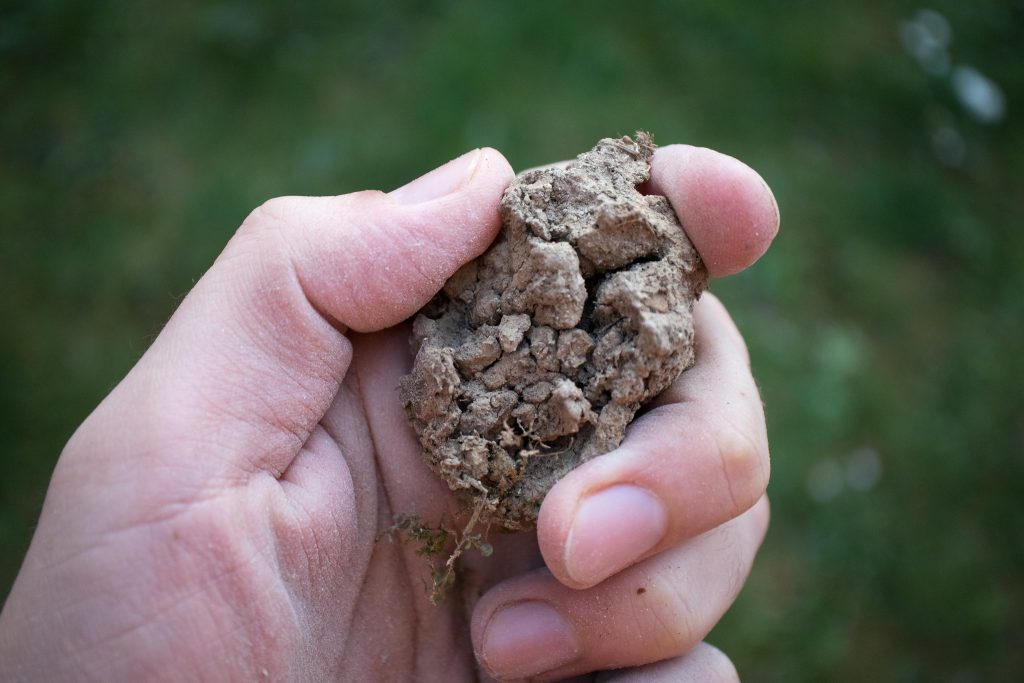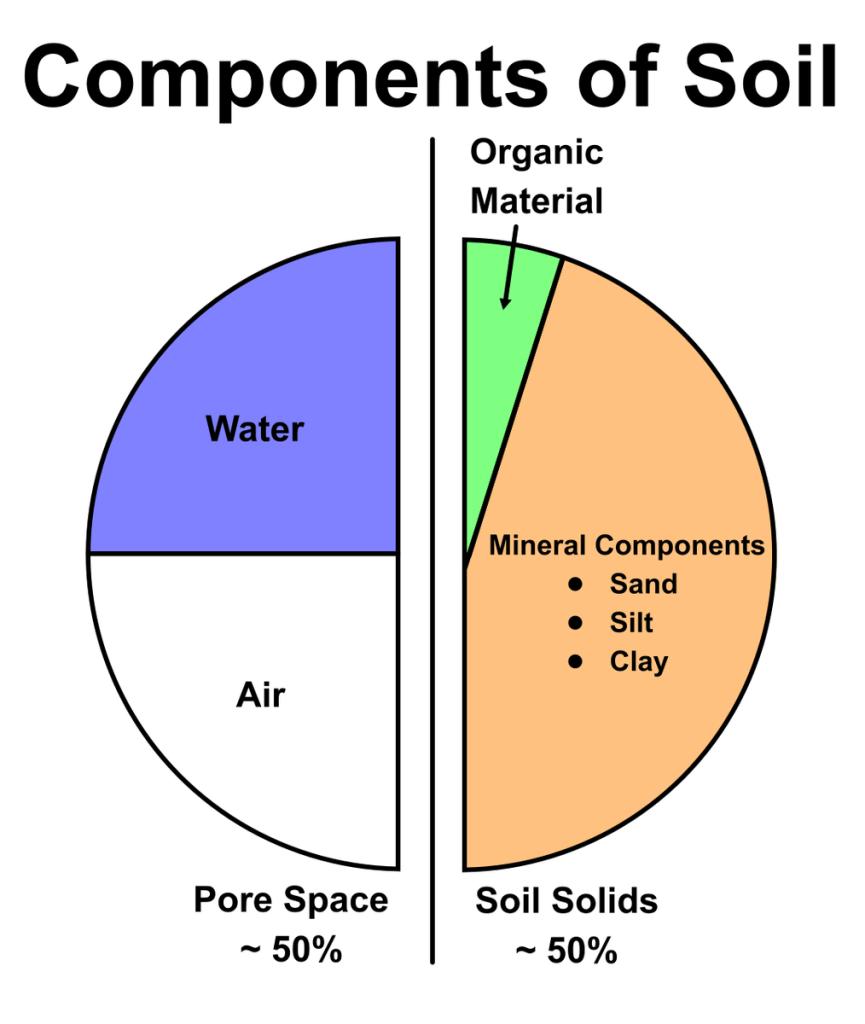When it comes to growing great grass, we often focus on what’s above the ground, overlooking what lies underneath. Soil structure—how the soil particles are arranged together—is an important part of plant growth as it impacts how things move through the ground and if the soil itself moves away via erosion.
So, let’s talk about what soil structure is, why it’s important, the ideal soil structure for grass, and how to improve it.

What is soil structure?
Before getting into soil structure, it’s helpful to touch on soil texture quickly.
Most people are familiar with the words “sand,” “silt,” and “clay.” These are the three different-sized particles that create soil. The combination of the different particle sizes leads to the texture of the soil, or how it looks and feels.
For instance, sand is thought of as gritty and somewhat blocky or coarse. Clay is soft and smooth, sometimes silky feeling. Soil with a high percentage of sand will take on sandy characteristics, the same with soil high in clay.
Soil structure is slightly different.
It is how the sand, silt, clay, and organic matter clump together to form what are known as aggregates. The size and shape of the aggregates and the resulting voids or pores between particles, in turn, influence many characteristics that impact plant growth.

What influences soil structure?
Different factors influence soil structure and can vary within your yard or from one residential lot to the next. Soil texture affects soil structure significantly, but aggregate formation is also determined by regional climate, organic material, biological activity in the soil, and management practices.
Things like how often you mow your grass and if you mow when the soil is wet play a huge part in soil structure.
Why is soil structure important?
Most often, soil structure is said to influence:
- Water movement into the ground and through the soil
- Air movement
- How roots grow through the soil
- Whether or not a soil is susceptible to erosion
Good soil structure is essential for healthy grass growth because it governs air, water, and nutrient movement into the soil.
Ideally, you want plenty of water and oxygen to move into the soil for the roots carrying nutrients from fertilizers. But you don’t want the water to move through the soil so quickly the roots can’t pull it into the plant. And, if water moves slowly into the soil, excess surface run-off can cause soil erosion.
If there is little to no soil structure, the soil may suffer from waterlogging, lack of oxygen, and nutrient lock-up. Your grass will struggle to survive and ultimately die!
The ideal soil structure for a healthy lawn
An ideal soil has a good balance of the different types of soil particles arranged to promote good air, water, and nutrient movement. It will also have excellent pore space for root growth, yet it won’t encourage runoff and soil erosion.
For a healthy lawn, you want to have friable loam soil that is made up of approximately 45% sand, clay, and silt (in a ratio that creates loam) and about 5% organic matter. The other half of the soil will be pore space for air and water.
- Friable soil is crumbly. It has decent-sized aggregates that break down easily into smaller fragments.
- Loam soil holds adequate moisture but drains well, so it doesn’t stay waterlogged when you water the lawn. It has good airflow and can retain nutrients.

How to improve soil structure for good grass growth
If you aren’t blessed with native soil great for grass, it doesn’t mean you’re doomed to have a sickly-looking lawn. There are ways to improve the structure and have a gorgeous yard.
I’ll admit it will take more time to improve the soil under your grass than in your garden or flowerbeds. Unless you want to rip out the turf, you can’t till it up to improve the “ingredients.” So, it has to be done gradually over time.
Avoid adding sand or clay to get a better loam ratio. All this does is create soil that closely resembles cement. Instead, you want to add organic matter to improve your soil structure.
- First, test the soil pH to ensure it’s in a desirable range. Amend it with lime or sulfur if necessary.
- Dethatch with a power rake or dethatcher and then aerate the lawn. These steps remove the thatch layer and break up soil compaction, creating channels for the organic matter to move through.
- Lastly, add a thin layer of finished compost or fine mulch over the lawn in a process known as topdressing.
It will take time to see soil structure improvement, but over time, you’ll achieve that desired friable loam you’re hoping for!
Need help with your lawn?
Growing a great lawn doesn’t have to be a tiring chore. If you need help, contact us here to get a quote or connect with us on Facebook.

